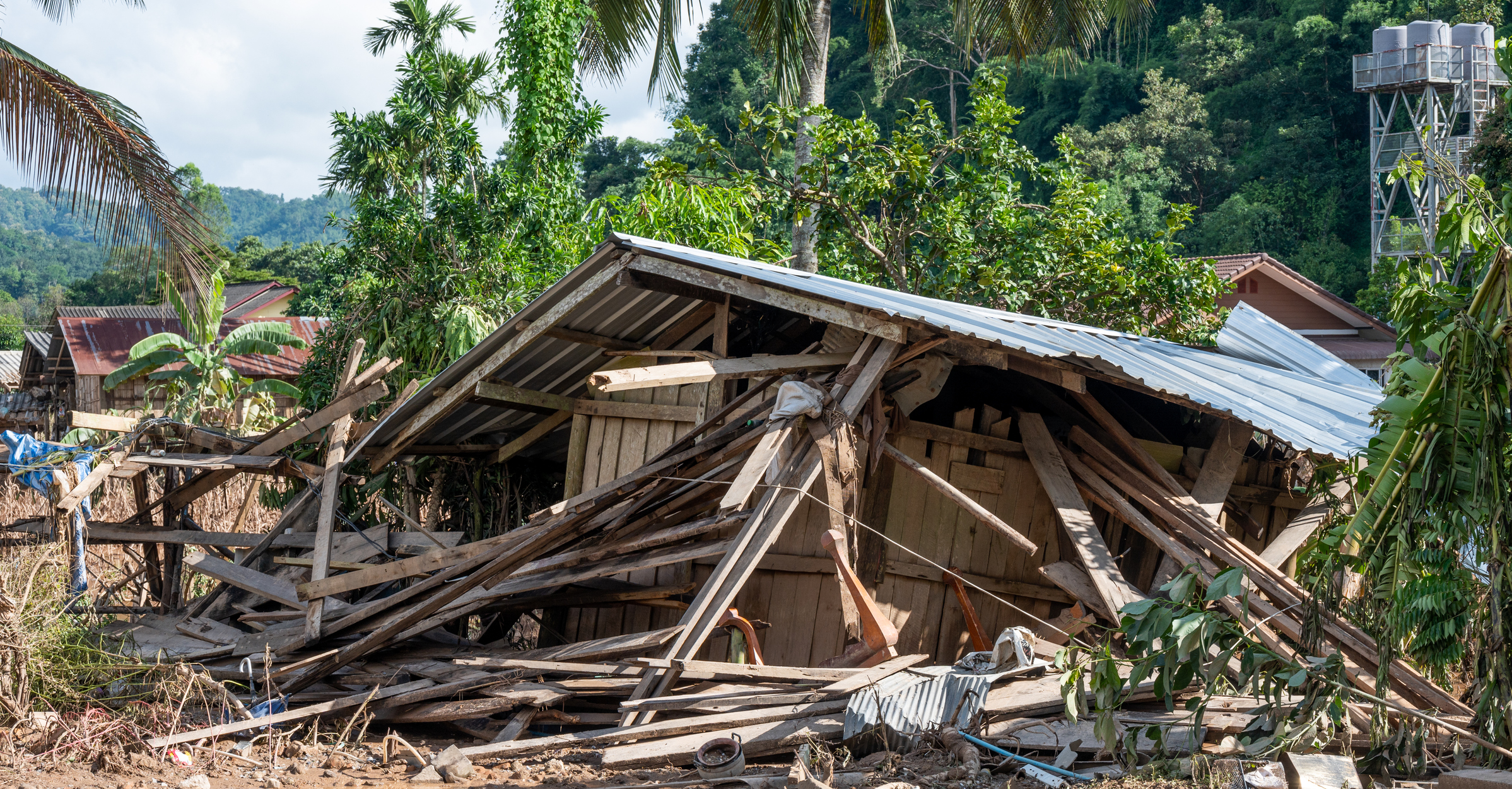Enhancing disaster risk reduction through environmental audits
29.01.2025
In today's world, no country is immune to disasters. These events, which cross national borders, have a significant impact on people's lives, economies, and the environment. Some regions are more vulnerable than others, but the effects of disasters are felt globally.
According to the United Nations Office for Disaster Risk Reduction (UNDRR), from 2000 to 2019, there were 7,348 major recorded disaster events claiming 1.23 million lives, affecting 4.2 billion people (many on more than one occasion) resulting in approximately US$2.97 trillion in global economic losses. These figures highlight the critical need for effective Disaster Risk Reduction (DRR) strategies to mitigate the impact of such events.
Supreme Audit Institutions (SAI) play a crucial role in auditing DRR efforts, ensuring that governments are accountable for their disaster preparedness and response strategies. SAIs can also audit government efforts related to disaster adaptation.
Resources for Disaster Management Audits
INTOSAI has created valuable resources for auditing disaster risk reduction, providing auditors with guidelines to evaluate disaster management policies and practices. One such resource is the WGEA Research Paper titled "Potential Criteria for Auditing Climate Change Adaptation – Strengthening Resilience and Adaptive Capacity to Climate-Related Hazards."[1]
This INTOSAI WGEA research project was led by SAI USA and the key highlights of the research paper include:
- International frameworks for strengthening resilience and adaptive capacity, such as the Sustainable Development Goal (SDG) 13.1 and the Sendai Framework for Disaster Risk Reduction. These frameworks provide high-level targets to help national governments strengthen resilience to climate-related hazards and natural disasters.
- Criteria for conducting performance audits of specific government initiatives aimed at strengthening resilience and adaptive capacity. It includes examples of how SAIs have employed these criteria in practice, offering practical insights for auditors.
- Integration of multiple performance audits of specific government initiatives into a greater body of work. This integration helps assess whether national governments are progressing toward the high-level international goals defined by SDG 13.1 and the Sendai Framework.
The Disaster Resilience Framework[2] created by SAI USA is also a useful tool which is designed to guide federal efforts in promoting resilience to natural disasters. It is built around three key principles:
- Information: Ensuring decision-makers have access to reliable and understandable information to assess risks and measure outcomes.
- Integration: Coordinating federal efforts to create a cohesive approach to disaster resilience.
- Incentives: Providing financial and other incentives to encourage long-term investments in risk reduction.
In addition, INTOSAI's guidance on auditing disaster management, GUID 5330[3], approved in 2020, offers guidelines for conducting disaster management audits, evaluating government actions aimed at reducing disaster risks, responding to emergencies, and implementing post-disaster measures.
The WGEA audit database[4] currently includes 59 audits related to Disaster Risk Reduction (DRR) since 2010. These audits cover a variety of environmental and governance issues, primarily conducted through performance audits, with some compliance audits as well.
Examples of the main findings
National Audit Office (NAO) Report on Government Resilience in Extreme Weather
- Extreme weather events, such as flooding and high temperatures, are estimated to cost the UK economy over £1 billion annually
- The UK government has taken steps to manage national risks more effectively by establishing the National Situation Centre and the Climate Resilience Board.
- Despite these efforts, the government has yet to set out a clear vision for national resilience, including specific targets and standards for preparedness and risk tolerance.
Australian National Audit Office (ANAO) Report on the Administration of the Disaster Recovery Funding Arrangements (DRFA)
- The administration of DRFA processes and assurance activities has been largely effective, with activities consistent with the DRFA determination.
- The agencies did not effectively monitor or report on DRFA performance, lacking appropriate arrangements to track and evaluate their activities.
- Procedures can be improved to better support assessments against the DRFA terms and conditions and ensure timely completion of assurance activities.
Mauritius' National Audit Office (NAO) Performance Audit Report on Government Response to Mitigate the Impact of Flooding
- Issues such as inadequate drainage systems, lack of maintenance, and development in flood-prone areas continue to cause flooding.
- Government responses have been more reactive than proactive, with drainage works often undertaken after flood events rather than based on a risk assessment.
- Recommendations from previous reports have been only partially implemented due to factors like complexity of projects, involvement of multiple stakeholders, and shortage of funds.
Overall there is room for improvement in governments' DRR actions. A common observation was the need for greater private sector investment in resilience to extreme weather events and climate change. This investment is crucial for enhancing the overall preparedness and response capabilities of governments and communities in the face of increasing climate risks.
We kindly ask Supreme Audit Institutions to submit more audits on Disaster Risk Reduction (DRR) in the WGEA audit database.
Cooperation on Disaster Risk Reduction between WGEA and UNDRR
In a significant move to enhance global disaster resilience, the WGEA is collaborating with the United Nations Office for Disaster Risk Reduction (UNDRR). A recent meeting in Helsinki focused on advancing disaster risk reduction efforts through innovative measurement frameworks and auditor training.
The discussions highlighted the need for measurement frameworks that can effectively demonstrate the impact of disaster risk reduction efforts, which can be challenging to evidence as the absence of disasters is a positive outcome.
WGEA aims to strengthen its cooperation with UNDRR, recognizing the alignment of the themes and the significant contributions INTOSAI can make to disaster reduction discussions. INTOSAI's global voice is crucial in advancing efforts to prevent disasters that claim lives, destroy homes, and cause irreparable damage to the natural environment.
Raisa Ojala, WGEA Secretariat
[1] environmental-auditing.org/media/112854/21e249801-v6-draft_research_paper__auditing_climate_change_adaptation-strengthening_strengthening_resilience_and_adaptive_capacity_to_climate_related_hazar.pdf

 Picture: Getty Images / Boy-Anupong
Picture: Getty Images / Boy-Anupong

